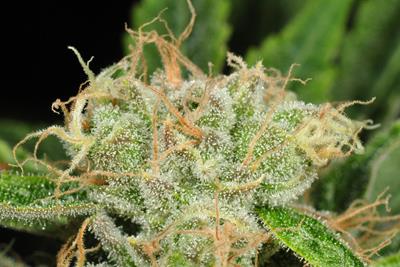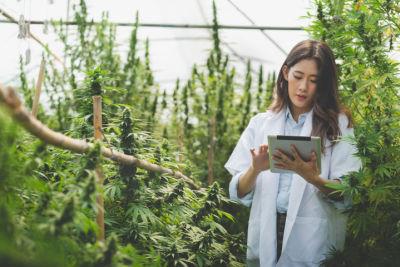
Sunday November 20, 2016
 Education
Education
What should you thank for the sweet scent of Super Lemon Haze? Or blame for the funky, cheese-like odor of Dairy Queen? Terpenes.
Not only does a cannabis strain have unique THC and CBD contents, but each one has a distinct terpene profile. These newly mapped chemical compounds provide a taste, smell and flavor to each plant—giving users a love/hate relationship with various strains. But these fragrant oils do much more than offer aromatic differences: Terpenes have immense therapeutic benefits and can help with everything from stress relief to memory retention.
In our growing awareness of terpenes, we have recognized the scientific reason behind such potent smells and wide-ranging physical effects. Linalool hydrocarbons not only make Amnesia Haze smell like an orange, but can also help treat sleeping disorders—or at least explains why it makes you drowsier than other strains. It’s a new world that researchers and breeders are just now getting a handle on, providing insight into how each one affects you on a variety of levels.
What Are Terpenes?
First, know that terpenes aren’t unique to cannabis plants: Pinene is found in conifers and pine needles and Caryophyllene is found in numerous herbs and spices. A plant can present numerous terpenes—all at various ratios with one typically overpowering the others, resulting in the smell or flavor we come to recognize.
But for our purposes, terpenes are found in the same area of the marijuana plant that produces THC, CBD and other cannabinoids. It’s said that these chemicals developed odors to help cannabis thrive by attracting pollinators, repelling insects, protecting against bacteria and deterring fungi. But how do odors change from plant to plant?
Profiles transform depending on the plant’s individual climate, soil, age and extraction processes. (Studies have found that traces of terpene diminish a week after initial harvest and when high heat is involved.) But researchers have found a synergistic relationship between cannabinoid compounds—the factors that ultimately affect our endocannabinoid system.
Been told to eat a mango before smoking? Mangoes contain the most common terpene, Myrcene, and works with your pot’s THC content to create a distinctive and sometimes “enhanced” high. Both THC and terpenes concentrate on the psychoactive area of your brain to alter chemical outputs like dopamine and serotonin, but terpenes can adjust how much THC gets through the blood-brain barrier—creating unique effects that vary from plant to plant.
A New Horizon
Terpenes present a “new frontier” for cannabis connoisseurs and researchers alike. While still in its infancy, mapping terpenes provides a higher level of accuracy when determining which strain is which. Some strains have even been found to have matching THC and CBD levels, meaning differences solely lie in terpene profiles. This new level of information gives a wealth of material for breeders to develop new strains, as well as help users decide which strain to choose depending on needs, wants and desires.
Research has primarily focused on THC and CBD cannabinoids, but more than 200 varieties of terpenes have already been identified—each with their own unique characteristics and compositions. Many cannabis analysis labs now test for terpene content automatically, but there’s still much more to learn. How great are their medicinal effects? Can you control or increase terpene profiles? Can you design your own high by manipulating terpenes? Future exploration will not only enhance the user’s marijuana experience, but provide consistency in the industry as data can be interpreted.
As you consider your next trip to the dispensary, keep in mind the most common terpene profiles below. Try something new and test out the differences for yourself as you become a terpene connoisseur.
Common Terpenes
Limonene
If you’re feeling down, limonene terpene varieties improve can lift your mood and attitude. Appropriately labeled, these lemon-smelling strains can help with anti-depression and gastric reflux.
Find in: Super Lemon Haze, Durban Poison
Myrcene
Distinguishable by its musky, earthy or clove-like scent, this terpene typically presents a relaxing effect to its users and is said to enhance the plant’s THC’s psychoactive characteristics. It’s the most common profile found in cannabis and is also found in bay leaves and lemongrass.
Find in: Pure Kush, El Nino
Pinene
Need a mental boost? Consider a variety with this pine-based terpene for better mental alertness and memory retention. Occasionally considered to smell both sharp and sweet, it’s also found in pine needles, conifers and sage.
Find in: Jack Herer, Dutch Treat
Humulene
Used to suppress appetite and provide anti-inflammatory relief, humulene can smell woody. You may find similarities to your favorite brews: These oils are also found in hops.
Find in: Girl Scout Cookies, White Widow
Linalool
Looking for something floral and citrusy? Also found in lavender, birch and laurel, this variety is the chamomile of terpenes. Users will feel calm and slightly sedated and is ideal for those with insomnia, depression or anxiety.
Find in: Amnesia Haze, G-13
Photo Credit: PotGuide







